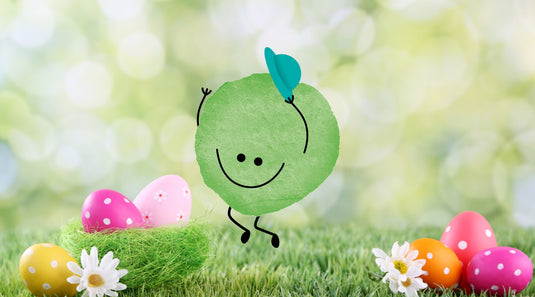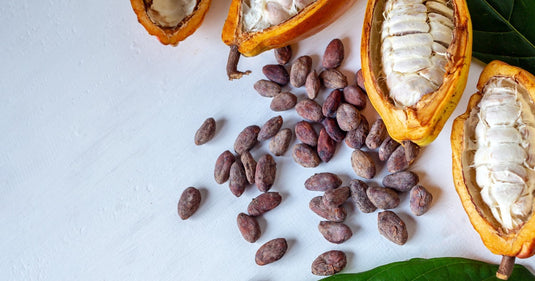
Chocolate lovers unite!
It's our favourite time of the year.
But did you know that your beloved easter eggs wouldn't taste like chocolate at all if microbes weren't involved during the production process?
Indeed, our tiny microbe friends work hard to create the delightful taste through fermentation. In the same way that lactic acid bacteria are needed to make yogurt, or the yeasts responsible for wine production.
From cocoa beans to chocolate with microbes
You probably know that chocolate is made from cocoa beans. The cocoa beans are found in a fruit from the Theobroma cacao tree which grows in tropical regions. As long as the fruit remains unopened, the cocoa beans grow safely inside without microbes being able to access them.
The magic begins when the beans are collected after harvesting. They are then stored with the remaining pulp for several days to start the fermentation process. This is where the microbes come into play!
The interesting part is that these microbes are not artificially added since they were already present on the outer shell of the cocoa beans. The bacteria and fungi naturally exist on the outside of the fruit and end up on the pulp and cocoa beans after the shell is opened. The pulp surrounding the cocoa beans is then fermented, changing the temperature and acidity. This impacts the cocoa beans, altering their taste and structure.

Why does it taste so good?
The compounds released during fermentation by microorganisms contribute to the distinct flavour of chocolate. Without them, our chocolate world would look completely different!
Researchers found that the superheroes of chocolate fermentation are certain strains of lactic acid bacteria such as Lactobacillus fermentum and Acetobacter pasteurianus, along with yeasts like Saccharomyces cerevisiae, Hanseniaspora thailandica, Hanseniaspora opuntiae, and Pichia kudriavzevii. Additionally, numerous other microorganisms, although not fully characterized yet, play a role in this fermentation process.
After fermentation, the beans are further roasted and processed into raw cocoa nibs. These nibs are already quite nutritious on their own. However, they can also be processed further into cocoa butter and chocolate in all kinds of scents, colours, flavours, and shapes.
Youtuber and renowned chef Nick DiGiovanni made chocolate from cocoa fruit himself in this short video. Definitely worth watching!
Discover more
-

PVA in laundry sheets - what's true (and what i...
There’s been a lot of discussion around PVA in laundry sheets recently. Understandable, because there’s a huge amount of information out there, and not all of it is clear or...
PVA in laundry sheets - what's true (and what i...
There’s been a lot of discussion around PVA in laundry sheets recently. Understandable, because there’s a huge amount of information out there, and not all of it is clear or...
-

WELKE CERTIFICATIES HEEFT YOKUU?
Bij YOKUU geloven we dat schoonmaken zacht moet zijn voor je huis, je gezondheid én de planeet - met 1 miljard poetshulpjes per product. We zijn ons ervan bewust dat...
WELKE CERTIFICATIES HEEFT YOKUU?
Bij YOKUU geloven we dat schoonmaken zacht moet zijn voor je huis, je gezondheid én de planeet - met 1 miljard poetshulpjes per product. We zijn ons ervan bewust dat...
-

FRAGEN SIE JORIS: WARUM RIECHEN MEINE KLEIDUNG ...
Ist Ihnen schon einmal aufgefallen, dass manche Kleidungsstücke selbst nach dem Waschen noch riechen? Das ist nicht einfach nur Pech (oder schlechte Kleidung) … es ist ein Phänomen namens Permastink....
FRAGEN SIE JORIS: WARUM RIECHEN MEINE KLEIDUNG ...
Ist Ihnen schon einmal aufgefallen, dass manche Kleidungsstücke selbst nach dem Waschen noch riechen? Das ist nicht einfach nur Pech (oder schlechte Kleidung) … es ist ein Phänomen namens Permastink....












